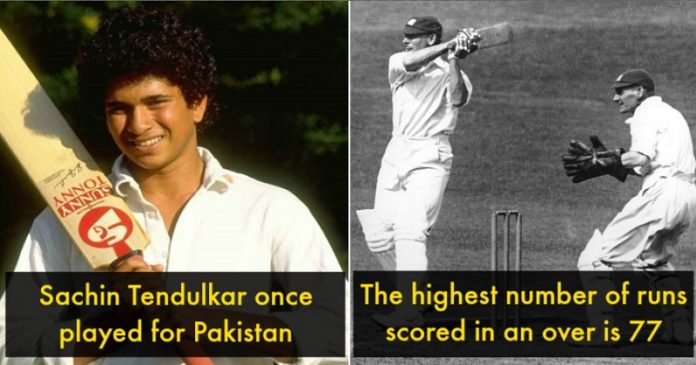Introduction
Welcome to an exciting journey into the world of cricket, where every match is a saga, and every player’s move can change the course of the game. Cricket, often hailed as a gentleman’s sport, has captivated millions around the globe with its unique blend of strategy, skill, and sheer thrill. In this blog post, we will unravel some of the most intriguing cricket facts and statistics that make this sport a fascinating spectacle.
Cricket, played in various formats, from the timeless Test matches to the fast-paced T20 games, has a rich history spanning centuries. Originating in the 16th century in England, it has evolved into a global phenomenon, capturing the hearts of fans from diverse cultures and backgrounds. Whether it’s the deafening cheers of a packed stadium or the tense silence in a nail-biting finish, cricket has a way of stirring emotions unlike any other sport.
As we delve into the depths of cricket’s intricacies, we will uncover remarkable trivia that showcases the sport’s glorious past and exciting present. From legendary players who etched their names in history books to astonishing records that seem almost impossible, we’ll explore the awe-inspiring aspects of cricket that continue to amaze enthusiasts worldwide.
Prepare to be amazed by statistical wonders, where numbers tell stories of epic battles on the pitch. We will analyze data, highlighting the highest run-scorers, the bowlers with the most wickets, and the teams that have dominated eras. Through engaging visuals, charts, and tables, we’ll present these statistics in a format that is both informative and visually appealing.
But this blog is not just about the past; it’s also a celebration of cricket’s innovations and evolution. We’ll marvel at the technological advancements that have revolutionized the game. From the introduction of Decision Review System (DRS) that has changed the way umpiring decisions are made to the use of advanced analytics for strategic planning, cricket has embraced modern technology while preserving its traditional spirit.
So, gear up to explore the FAQs surrounding cricket facts and statistics. Have you ever wondered about the significance of a player’s batting average or how Duckworth-Lewis method works? We’ll demystify these concepts, providing clear and concise answers to the questions that often intrigue both new and seasoned cricket enthusiasts.
Join us in this enthralling adventure through the world of cricket facts and statistics. Let’s uncover the magic behind the numbers, the stories behind the records, and the passion that unites fans across continents. Are you ready to be bowled over by the most interesting cricket facts? Let the game begin!
1. Cricket‘s Origins

Cricket, often regarded as a gentleman’s game, has a rich history that spans centuries. Its origins can be traced back to the 16th century in rural England. Let’s delve into the intriguing beginnings of this sport and its transformation over the years.
The Birthplace: Cricket is believed to have originated in the southeast of England, particularly in the Weald region of Kent and Sussex. Initially, it was played as a pastime by shepherds and farmers who used their tools, like shepherds’ crooks, as makeshift bats. The game evolved gradually, and by the 17th century, it gained popularity among the English nobility.
Early Documentation: The first documented cricket match dates back to 1646, when two teams from Kent and Sussex competed in a match that was disrupted by the English Civil War.
The Influence of Hambledon: In the 18th century, the village of Hambledon in Hampshire emerged as a cricketing hub. The Hambledon Club played a crucial role in shaping the sport’s rules and regulations. It was during this time that the concept of a pitch with stumps and bails was introduced, which remains a fundamental aspect of the game today.
Spread Across the British Empire: Cricket‘s popularity surged as the British Empire expanded. British soldiers and traders introduced the game to various parts of the world, including India, the West Indies, Australia, and South Africa. Each region developed its own cricketing culture and traditions, contributing to the sport’s global diversity.
International Cricket: The first international cricket match was played in 1877 between Australia and England in Melbourne. This historic Test match marked the beginning of international cricket, paving the way for the formation of the International
Modern Era: Today, cricket is one of the most popular sports worldwide, with multiple formats such as Test, One Day International (ODI), and Twenty20 (T20) cricket. The sport continues to evolve, with innovations like Day-Night Test matches and the growth of T20 leagues like the Indian Premier League (IPL).
To summarize, cricket‘s origins are rooted in rural England, but it has since blossomed into a global phenomenon. From humble beginnings with makeshift equipment to international competitions watched by millions, cricket‘s journey is a testament to its enduring appeal and cultural significance.
2. The Laws of Cricket
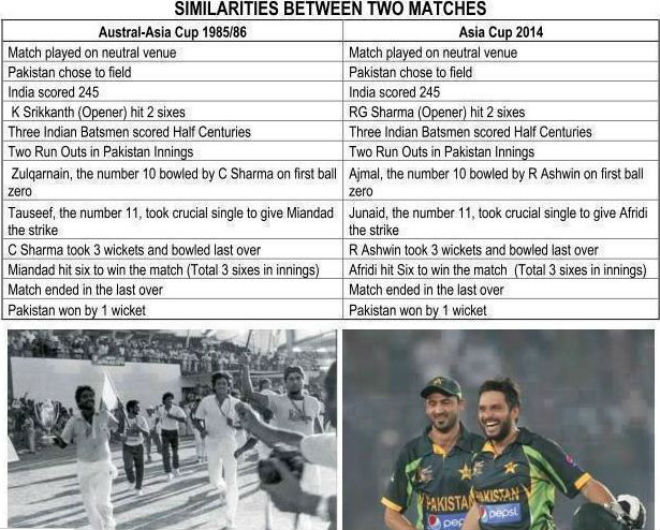
Cricket, a sport known for its traditions and etiquettes, is governed by a comprehensive set of rules and regulations known as the Laws of
Basic Rules
- Teams: A standard cricket team consists of 11 players, with one team designated as the batting side and the other as the bowling and fielding side.
- Wickets: The batting team aims to score runs by hitting the ball and running between two sets of three wooden stumps called “wickets.”
- Bowling: The bowling side tries to dismiss batsmen by getting them “out” through various means, such as bowled, caught, or lbw (leg before wicket).
Scoring
Scoring in cricket is diverse and can be achieved through several means:
- Runs: Batsmen score runs by hitting the ball and running between the wickets. The boundary, marked by a rope or fence, awards four runs if the ball crosses it along the ground and six runs if it clears it in the air.
- Extras: These are runs scored without the batsman hitting the ball, including byes (when the ball passes the batsman without touching the bat) and wides (when the bowler delivers a wide ball that the batsman cannot play).
- Dismissing Batsmen: Bowlers and fielders aim to dismiss batsmen by getting them out in various ways, such as catching the ball, hitting the stumps, or trapping the batsman lbw.
Cricket Equipment
Players in cricket use specialized equipment to play the game:
| 1. Bat: | The bat is used by the batsman to hit the ball. It’s typically made of willow and has specific dimensions defined by the laws. |
| 2. Ball: | The cricket ball is made of leather and is hard and durable. It is bowled by the bowler and must meet size and weight requirements. |
| 3. Protective Gear: | Batsmen wear protective gear such as helmets, pads, gloves, and abdominal guards to safeguard themselves from injury. |
Field Placement
The fielding side in cricket positions its players strategically to maximize their chances of dismissing the batsmen. This includes placing fielders in various positions like slips, gully, mid-on, and mid-off, depending on the bowling tactics and batsmen’s strengths.
In conclusion, the Laws of Cricket serve as the foundation for the game’s fairness and integrity. They encompass every aspect of the sport, from the basic rules and scoring to equipment and field placement. Understanding these laws is essential for players and fans alike to appreciate the intricacies of cricket.
3. Iconic Cricket Records
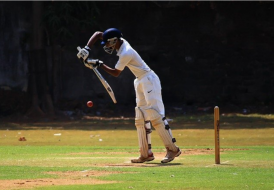
Cricket, with its long history and illustrious traditions, has seen remarkable achievements that have left an indelible mark on the sport. These iconic cricket records, set by legendary players over the years, stand as a testament to human excellence and the pursuit of perfection. Let’s explore some of the most noteworthy records in the world of cricket.
Batting Records
When it comes to batting, a few names stand out in the annals of cricket history:
- Most International Runs: Sachin Tendulkar, the “Little Master” from India, holds the record for the most international runs, accumulating over 34,000 runs during his illustrious career.
- Highest Individual Score in Test Cricket: Brian Lara of the West Indies scored an astonishing 400 not out against England in 2004, a record that still stands.
- Fastest Century in ODI: AB de Villiers of South Africa smashed a century off just 31 balls against the West Indies in 2015, showcasing his extraordinary batting prowess.
Bowling Records
Bowlers have their share of iconic records as well:
- Most Wickets in Test Cricket: Sri Lanka’s Muttiah Muralitharan tops the charts with 800 wickets, making him the highest wicket-taker in the history of the format.
- Best Bowling Figures in an Innings: England’s Jim Laker took 19 wickets for 90 runs against Australia in 1956, a feat that remains unmatched in Test cricket.
- Fastest Five-Wicket Haul in T20: Yuzvendra Chahal of India claimed a five-wicket haul in just four overs, a record-setting performance in the shortest format.
Team Records
Cricket teams have also achieved remarkable milestones:
- Highest Team Total in ODIs: England made history by scoring 481 runs against Australia in 2018, setting a new benchmark in the 50-over format.
- Longest Unbeaten Streak in Test Cricket: The West Indies holds the record for the most consecutive Test matches without a loss, an astounding 27-match streak from 1982 to 1984.
Unique Records
Some records are just extraordinary in their uniqueness:
- Most Sixes in International Cricket: Shahid Afridi of Pakistan holds the record for hitting the most sixes in international cricket, displaying his aggressive style of play.
- Fastest Double Century in Test Cricket: New Zealand’s Brendon McCullum scored a double century in just 186 balls against India in 2014, redefining the role of a Test match opener.
These iconic cricket records showcase the incredible talent and dedication of players who have left an indelible mark on the sport. They serve as a constant source of inspiration for aspiring cricketers and continue to captivate fans around the world.
4. Memorable Moments in Cricket History

Cricket has witnessed countless moments that have left fans awestruck and etched in their memories forever. These moments range from dramatic last-ball victories to breathtaking catches and incredible displays of sportsmanship. Here are some of the most memorable moments in the storied history of cricket.
1. The “Underarm Incident” (1981)
In a controversial match between Australia and New Zealand, Greg Chappell instructed his brother Trevor to deliver the final ball underarm to prevent New Zealand from scoring the required six runs. This incident led to significant changes in cricketing rules and is remembered as one of the most unsportsmanlike acts in cricket history.
2. India’s 1983 World Cup Victory
Kapil Dev’s iconic innings of 175 not out against Zimbabwe and India’s subsequent victory in the 1983 Cricket World Cup final against the West Indies marked a turning point in Indian cricket. It ignited the passion for the sport in the nation and paved the way for future successes.
3. Shane Warne’s “Ball of the Century” (1993)
Australian leg-spinner Shane Warne announced his arrival on the international stage with a mesmerizing delivery to England’s Mike Gatting during the 1993 Ashes series. The ball spun sharply and bamboozled Gatting, earning the nickname “Ball of the Century.”
4. Sachin Tendulkar’s “Desert Storm” (1998)
In the 1998 Coca-Cola Cup in Sharjah, Sachin Tendulkar played two extraordinary innings against Australia under extreme desert conditions. His stellar performances, known as “Desert Storm,” guided India to victory and solidified his status as a cricketing legend.
5. Brian Lara’s 400 Not Out (2004)
Brian Lara’s epic innings of 400 not out against England in 2004 remains one of the most remarkable achievements in Test cricket. It is the highest individual score in Test cricket, showcasing Lara’s incredible batting prowess and endurance.
6. The Super Over in the 2019 World Cup Final
The 2019 ICC Cricket World Cup final between England and New Zealand ended in a dramatic tie, leading to a thrilling Super Over. England emerged victorious based on boundary count, in a match that will be remembered for its sheer intensity and sportsmanship.
7. Ben Stokes’ Heroics in the 2019 Ashes
Ben Stokes’ astonishing innings of 135 not out against Australia in the third Ashes Test of 2019 kept England’s hopes alive and is regarded as one of the greatest Test innings ever played. His performance inspired England to an improbable victory.
These memorable moments in cricket history have not only defined the sport but have also left an enduring impact on fans worldwide. They serve as a testament to the excitement, drama, and unpredictability that make cricket such a beloved and captivating game.
5. Evolution of Cricket Equipment

The evolution of cricket equipment over the years has been instrumental in shaping the way the sport is played today. From rudimentary tools to high-tech gear, the transformation has been remarkable. Let’s delve into the fascinating journey of cricket equipment.
1. Early Cricket Equipment
In the early days of cricket, which dates back to the 16th century, the equipment was basic and often improvised. Bats were shaped like hockey sticks, and balls were made from leather and stuffed with wool. Protective gear was virtually nonexistent, and players relied on their skills and courage to face fast bowlers.
2. Development of the Cricket Bat
The evolution of the cricket bat has been particularly noteworthy. Initially, bats were quite heavy and had a curved blade. In the 18th century, the shape of the bat gradually transformed into the familiar flat surface we see today. The introduction of willow wood for bat-making in the 18th century was a game-changer, as it provided a combination of strength and lightness that revolutionized batting.
3. Introduction of Protective Gear
As cricket became more competitive and the pace of the game increased, protective gear became essential. The 19th century saw the introduction of leg pads, gloves, and helmets. This equipment provided batsmen with greater confidence to face even the fastest bowlers.
4. Modern Cricket Balls
The cricket ball has also evolved significantly. Traditional cricket balls were made from a core of cork wrapped in string and covered with leather. Today, cricket balls are manufactured with precision to ensure consistent weight and shape. Red and white cricket balls are used in different formats of the game to suit various playing conditions.
5. Innovations in Bowling Techniques
The evolution of cricket equipment has also influenced bowling techniques. Fast bowlers now rely on cricket boots with cleats for better grip, and the development of swing and seam bowling has added complexity to the game. Spin bowlers have benefited from improved ball technology, enabling them to impart more spin.
6. The Role of Technology
In the modern era, technology has played a significant role in cricket equipment. Innovations like carbon fiber materials for bats have made them lighter and more powerful. Helmets have become more advanced, offering superior protection without compromising visibility. Additionally, Hawk-Eye technology and ball-tracking systems have enhanced decision-making in the game.
7. Cricket Clothing
Cricket attire has also evolved. Players now wear moisture-wicking fabrics that keep them comfortable during long matches. The advent of colored clothing in limited-overs formats has added a new dimension to the visual aspect of the game.
In conclusion, the evolution of cricket equipment has mirrored the development of the sport itself. From humble beginnings with makeshift gear to the cutting-edge technology of today, cricket equipment has played a pivotal role in making cricket the dynamic and competitive sport it is today.
6. Cricket’s Global Reach
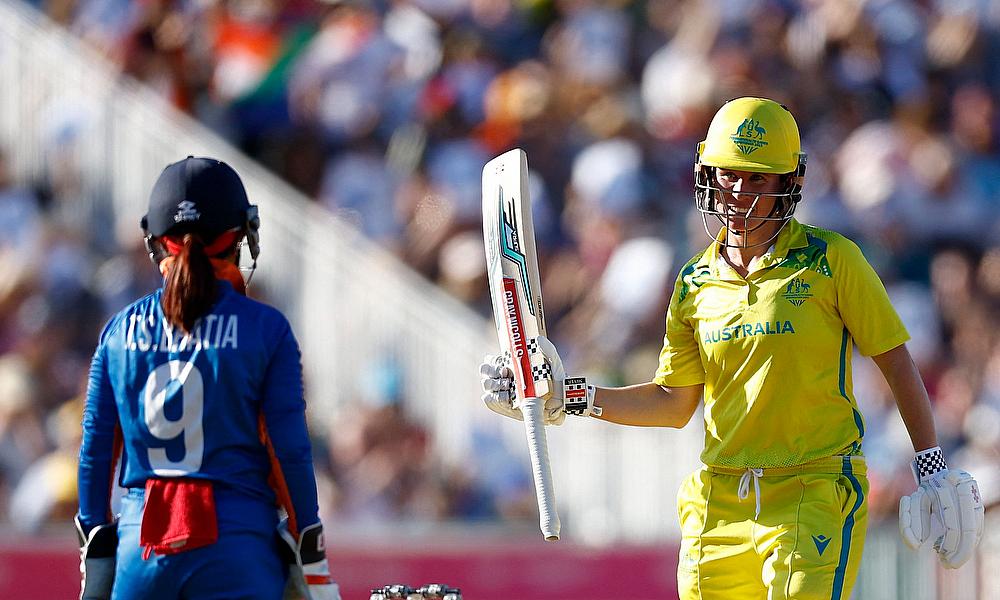
Cricket, once confined to its birthplace in England, has evolved into a global phenomenon with a vast and diverse following. The sport’s journey from colonial roots to international stardom is a testament to its universal appeal. Let’s explore how cricket has reached every corner of the globe.
1. Colonial Influence
Cricket’s expansion beyond England can be largely attributed to the British Empire. As British colonialists spread across the world, they introduced the game to their colonies and dominions. Countries like India, Australia, West Indies, Pakistan, and South Africa embraced cricket, making it an integral part of their culture.
2. Rise of International Cricket
The first international cricket match was played in 1877 between Australia and England, marking the beginning of international cricket. This paved the way for the formation of the International Cricket Council (ICC) in 1909, which has since overseen the global development of the sport.
3. Test Cricket
Test cricket, the oldest and most traditional format of the game, has witnessed the participation of numerous countries over the years. It remains a symbol of cricketing heritage, with countries like India, England, Australia, and Pakistan boasting passionate Test cricket followings.
4. One-Day Internationals (ODIs)
The introduction of ODIs in the 1970s added a new dimension to cricket, making it more accessible to a wider audience. The inaugural Cricket World Cup in 1975 was a landmark event, and ODIs quickly gained popularity, especially in countries like Sri Lanka, Bangladesh, and Zimbabwe.
5. The T20 Revolution
The Twenty20 (T20) format, characterized by its shorter duration and high entertainment value, brought cricket to a new generation of fans. The Indian Premier League (IPL) and other T20 leagues in various countries have attracted global talent and expanded the sport’s reach further.
6. Cricket Beyond the Commonwealth
Cricket’s global footprint extends beyond the Commonwealth nations. Associate and Affiliate members of the ICC, including Afghanistan, Ireland, and the Netherlands, have made significant strides in international cricket, participating in major tournaments and gaining recognition.
7. Cricket in Non-Traditional Regions
Cricket has also made inroads into non-traditional regions, such as the United States, where it is gaining popularity, and Nepal, where it enjoys a passionate following. The sport’s inclusivity has contributed to its expansion.
In conclusion, cricket’s global reach is a story of cultural exchange, competitive spirit, and the universal love for the game. From its colonial roots to the modern-day T20 extravaganzas, cricket has transcended boundaries and become a source of unity and excitement for fans around the world.
7. Cricket’s Influence on Popular Culture
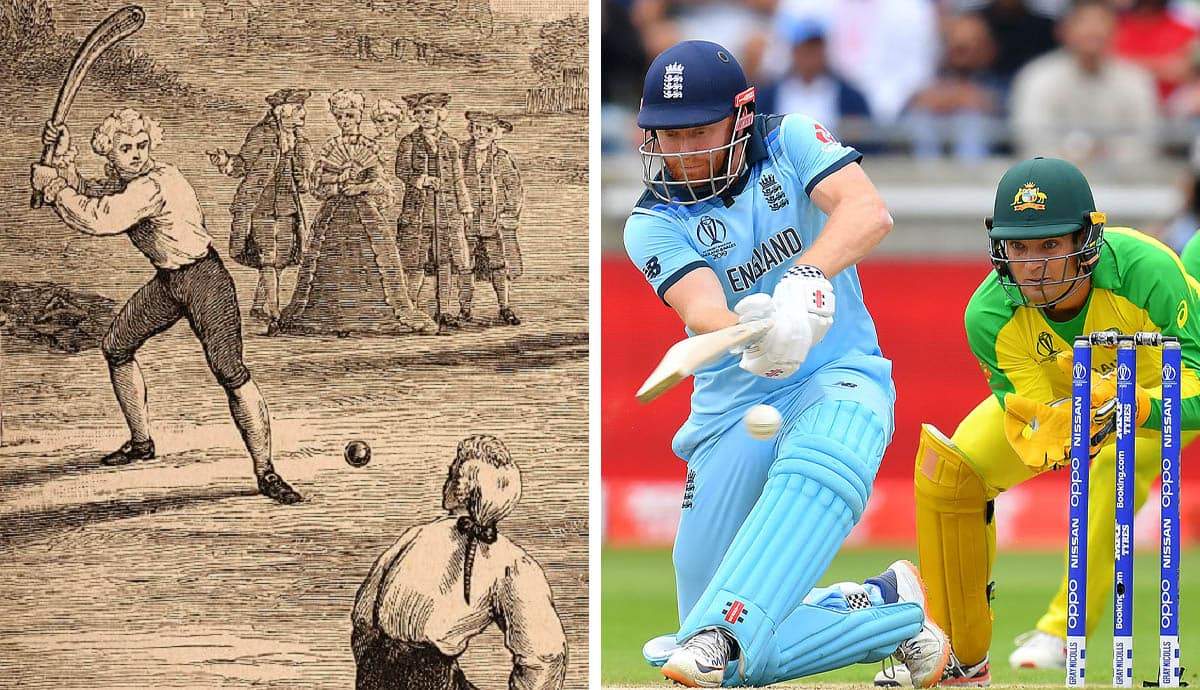
Cricket, beyond being just a sport, has made a significant impact on popular culture worldwide. It has infiltrated literature, movies, music, and art, becoming a source of inspiration and a symbol of national pride. Let’s explore how cricket has left its mark on popular culture.
1. Cricket in Literature
Cricket has found its way into the pages of literature, with authors often using it as a metaphor for life’s challenges and triumphs. Notable works like “Beyond a Boundary” by C.L.R. James and “The Art of Cricket” by Sir Donald Bradman delve into the philosophical and strategic aspects of the sport.
2. Cricket in Film
Cricket-themed movies have been a hit among audiences. Films like “Lagaan” from India and “Wondrous Oblivion” from the United Kingdom capture the drama and passion associated with the sport. These movies have also introduced cricket to audiences unfamiliar with the game.
3. Cricket in Music
Cricket anthems and songs have become an integral part of the sport’s culture. “Sachin Sachin” and “Mauka Mauka” from India, and “Cricket’s Coming Home” from England are just a few examples of how music celebrates cricketing events and ignites team spirit.
4. Cricket Art and Memorabilia
Cricket-themed art, often featuring iconic players and moments, has gained recognition in the art world. Collectors value cricket memorabilia, including autographed bats, jerseys, and photographs, as prized possessions.
5. Fashion and Merchandise
Cricket has influenced fashion trends, especially in countries where the sport is a religion. Team jerseys and merchandise are donned proudly by fans, and cricket-inspired fashion has made its way into runways and designer collections.
6. Cricket’s Influence on Language
The sport has also contributed to language with its unique terminology. Words like “googly,” “duck,” and “sticky wicket” are often used in everyday conversation, adding a touch of cricket to the lexicon.
7. Impact on Advertising and Sponsorship
Cricket’s immense popularity has attracted advertisers and sponsors, leading to iconic ad campaigns featuring cricketing legends. Cricketers often endorse products ranging from soft drinks to luxury cars, further embedding the sport in popular culture.
In conclusion, cricket’s influence on popular culture is vast and enduring. It has transcended its role as a sport to become a symbol of identity, aspiration, and unity. Cricket’s presence in literature, film, music, art, and fashion reflects its deep impact on society and its ability to capture the hearts of millions around the world.
8. Lesser-Known Cricket Facts
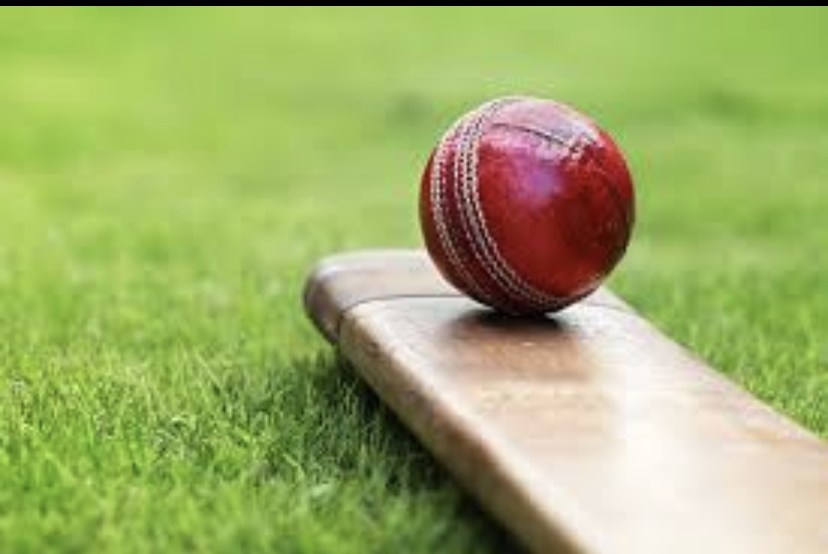
While cricket is known for its rich history and famous records, there are many lesser-known facts and anecdotes that add depth to the sport’s narrative. Here, we uncover some intriguing and obscure cricket facts that may surprise even the most ardent fans.
1. The First International Cricket Match
The first international cricket match was played between the United States and Canada in 1844, predating the famous England-Australia Ashes series by almost three decades.
2. The Oldest Cricket Ball
The world’s oldest surviving cricket ball is known as the “Bartlemas” ball, dating back to the 18th century. It is now displayed at the MCC Museum at Lord’s Cricket Ground in London.
3. The Only Cricketer to Bowl with Both Hands
Pakistan’s Ambidextrous cricketer, Yasir Jan, made headlines by becoming the only cricketer in history to bowl with both hands in a single over during a domestic match.
4. The Highest Number of Runs in a Single Over
In a bizarre incident during a domestic match in New Zealand, Bert Vance bowled a staggering 77-run over, including a world record 77 extras.
5. The First Tied Test Match
The first-ever tied Test match occurred in 1960 between Australia and the West Indies at the Gabba in Brisbane, showcasing the drama and excitement of Test cricket.
6. The Most Consecutive Centuries
Legendary Indian cricketer Sachin Tendulkar holds a unique record for scoring the most consecutive centuries in international cricket, achieving this remarkable feat in 1998.
7. The Shortest Test Match
The Test match between England and Australia at The Oval in 1882 holds the record for the shortest-ever Test match. It lasted just one day, making it the “Great Cricket Coup.”
8. The First Women’s International Cricket Match
The first recorded women’s international cricket match took place between England and Australia in 1934. Women’s cricket has since grown in popularity and recognition.
9. The Most Ducks in an Innings
Bangladesh holds the record for the most ducks (dismissals without scoring) in a single innings of a Test match. They had 9 ducks against Zimbabwe in 2013.
10. The Highest Team Total in a One-Day Match
In an incredible display of power-hitting, England’s men’s team scored a record-breaking 481/6 against Australia in a One-Day International (ODI) in 2018.
These lesser-known cricket facts offer a glimpse into the sport’s quirks, peculiarities, and fascinating history. Cricket, with its rich tapestry of stories and statistics, continues to captivate fans with its ever-evolving narrative.
Flagbearers ???????? captain @CoolNidadar and sports shooter G M Bashir lead the Pakistan contingent at the Hangzhou Asian Games opening ceremony ????
Best of luck team!#AsianGames pic.twitter.com/8sCco1HAbI
— Pakistan Cricket (@TheRealPCB) September 23, 2023
FAQs About Cricket Facts and Statistics
Cricket enthusiasts often have questions about the intriguing world of cricket facts and statistics. Here, we address some frequently asked questions to enhance your understanding of this fascinating aspect of the sport:
1. What are some interesting historical cricket facts?
Cricket has a rich history filled with fascinating facts. From the first international cricket match played in 1844 between the United States and Canada to the legendary Don Bradman’s astonishing batting average of 99.94, history is replete with captivating tales of the sport.
2. Who holds the record for the highest individual score in a single inning?
Brian Lara, the West Indian cricket legend, holds the record for the highest individual score in Test cricket. He scored an incredible 400 runs not out against England in 2004, a feat that mesmerized cricket fans worldwide.
3. What are the key statistics that define a player’s performance?
A player’s performance is often assessed through key statistics such as runs scored, wickets taken, batting average, and bowling average. The batting average indicates a batsman’s average runs per dismissal, while the bowling average signifies the average runs conceded per wicket taken by a bowler.
4. How do cricket statistics influence team strategies?
Cricket statistics play a pivotal role in shaping team strategies. Captains and coaches analyze player statistics to make informed decisions about team composition, batting orders, and bowling rotations. They study opponents’ statistics to exploit weaknesses and devise game plans tailored to specific players.
5. What is the significance of statistical analysis in modern cricket?
Statistical analysis has revolutionized modern cricket. Advanced metrics and data-driven insights enable teams to optimize player performance, identify patterns, and strategize effectively. Tools like data analytics and player tracking systems provide valuable insights, helping teams gain a competitive edge in matches.
6. Are there statistical records specific to different formats of the game?
Yes, cricket statistics vary across formats such as Test cricket, One Day Internationals (ODIs), and Twenty20 Internationals (T20Is). Different records exist for each format, showcasing the adaptability and versatility of players in different types of matches.
| Format | Record | Player | Year |
|---|---|---|---|
| Test | Most runs in a career | Sachin Tendulkar | 15,921 |
| ODI | Fastest century | AB de Villiers | 31 balls |
| T20I | Most sixes in an inning | Aaron Finch | 14 sixes |
These records highlight the exceptional achievements of players in different formats, showcasing the diversity of talent in the world of cricket.
By understanding these cricket facts and statistics, fans can truly appreciate the depth of the sport, enriching their viewing experience and conversations about the game.
Conclusion
After exploring the captivating world of cricket facts and statistics, it becomes evident that this sport is not just a game; it’s a treasure trove of remarkable achievements, historical milestones, and thrilling moments. By delving into the intricacies of cricket, fans can deepen their understanding and appreciation for the game.
Key Takeaways:
- Cricket is rich in history and boasts a plethora of interesting trivia, from the first-ever international match in 1844 to the evolution of modern formats like T20 cricket.
- Players’ Feats: Cricket records showcase extraordinary talents, with legends like Sachin Tendulkar and Don Bradman etching their names in the annals of the sport. These records not only reflect individual brilliance but also represent the spirit of teamwork and dedication.
- Unforgettable Matches: The sport has witnessed unforgettable matches, such as the 2005 Ashes series and the 2019 World Cup final. These games, filled with nail-biting moments and unexpected twists, have left an indelible mark on cricket enthusiasts worldwide.
- Strategic Evolution: Cricket has evolved not only in terms of player skills but also in strategy. Advanced statistical analysis and technology, like ball-tracking systems and predictive algorithms, have revolutionized team strategies, leading to more exciting and competitive matches.
Exploring WhatCricket.com:
For avid fans eager to dive deeper into the world of cricket facts and statistics, WhatCricket.com serves as an invaluable resource. This website offers comprehensive data, in-depth analysis, and expert commentary, allowing enthusiasts to stay updated with the latest trends and developments in the cricketing universe.
Whether you’re interested in understanding the nuances of batting averages, exploring the history of iconic rivalries, or analyzing team performance across different formats, WhatCricket.com provides a user-friendly platform to quench your thirst for cricket knowledge.
Get Involved:
As you embark on your cricketing journey armed with newfound knowledge, remember that cricket is not just a spectator sport—it’s a community. Engage with fellow fans, participate in discussions, and share your favorite cricket facts. Your passion fuels the spirit of the game and contributes to the vibrant cricketing community worldwide.
In conclusion, cricket facts and statistics add depth to the sport, transforming it into a captivating tapestry of achievements and history. Embrace the fascinating world of cricket, explore its intricacies, and celebrate the passion that unites fans across the globe.
